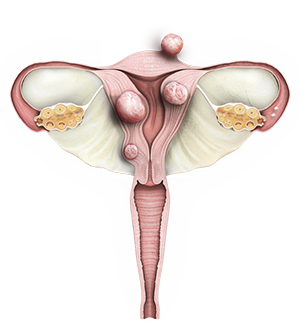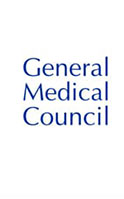Fibroids

What are Fibroids?
The uterus, also called the womb, is a female reproductive organ where a baby grows during pregnancy. Fibroids refer to noncancerous growths that can develop in the tissues of the uterus. This is a common health condition affecting women in the reproductive ages between 16 to 50 years.
Types of Fibroids
Fibroids are classified based on their location in the uterus. The different types of fibroids include:
- Intramural fibroids: These are embedded in the muscular wall of the uterus and are quite common.
- Subserosal fibroids: These extend into the outer uterine layer.
- Submucosal fibroids: These extend into the cavity of the uterus.
- Cervical fibroids: These develop at the entrance into the uterus called the cervix.
Causes
The exact cause of fibroid formation is not clear. However, it may be associated with:
- High estrogen levels in a woman’s body
- Consumption of estrogen-containing birth control pills
- Genetic factors, as you can develop fibroids if a close relative has it
Fibroid formation has also been linked with obesity and the consumption of red meat.
Diagnosis
Fibroids may not cause any symptoms and are usually diagnosed during a routine pelvic examination.
Tests used to identify fibroids include:
- Abdominal ultrasound scan
- MRI scan
- Laparoscopy where a narrow tube with a camera is inserted through the abdomen to examine the outer surface of the uterus
- Hysteroscopy where a narrow tube with a camera is inserted through the vagina to examine the inside of the uterus
Treatment
Treatment depends on the location of the fibroids, the intensity of the symptoms and whether you are planning on pregnancy. You may not require treatment if symptoms are absent or mild. When treatment is indicated the different approaches include:
- Medications: (usually temporary & short term): GnRH analogues or Progesterone receptor modulator drugs
- Placement of an intrauterine device or IUD which releases the hormone levonorgestrel that controls the growth of the uterine lining
- Surgery may be recommended for extreme cases where conservative options fail to provide relief.
The different surgical approaches include:
- Myomectomy (Laparoscopic, Hysteroscopic, Open) : The removal of fibroids from the wall of the uterus.
- Hysterectomy: Complete or partial removal of the uterus.
- Uterine fibroid embolization (UFE): A procedure to block the blood supply to the fibroid area.
- Endometrial ablation: Removal of the lining inside the uterus with heat.
- Ultrasound surgery: high-energy ultrasound waves are used to shrink the fibroids.
Your doctor will discuss the various options available to you and recommend the most appropriate treatment based on your situation and if you wish to become pregnant in the future.







